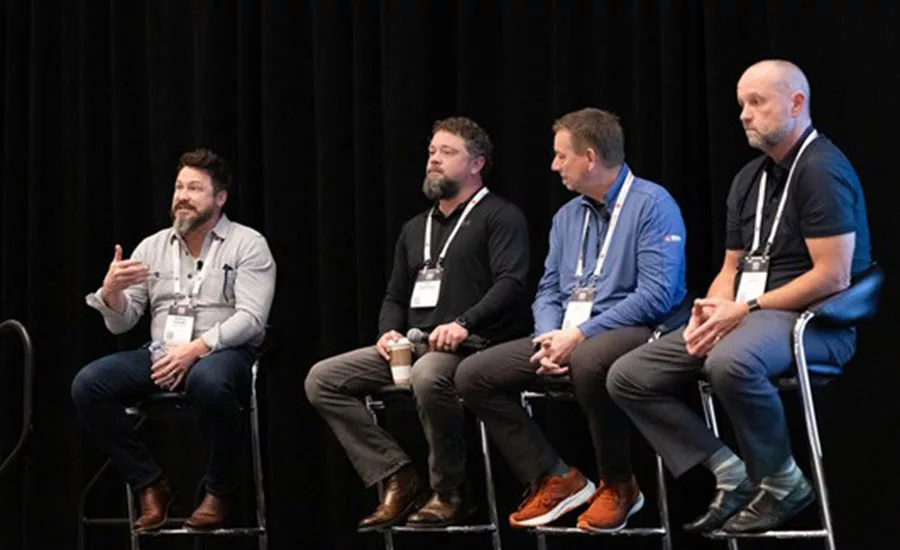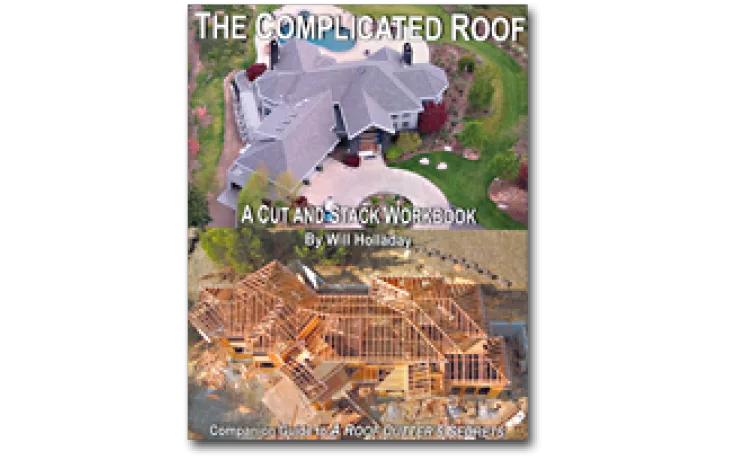Extreme Weather Special Section
Understanding Hail: Project ICECHIP Is Finally Measuring It
First U.S. hail field study in 40 years aims to revolutionize roofing materials, forecasting and damage mitigation

Researchers are collecting hailstones in real time using person-sized funnels and drone-mounted sensors as part of Project ICECHIP, a groundbreaking government-funded study aimed at improving roofing resilience and storm forecasting.
— Image courtesy of AccuWeather
Storm season is here — though Mother Nature rarely checks her calendar — and a new study called Project ICECHIP kicked off last month to understand hail as never before.
Formally called the In-situ Collaborative Experiment for the Collection of Hail in the Plains, it’s the first U.S. hail-focused campaign in more than 40 years.
Funded by a National Science Foundation grant, the six-week effort unites 15 American universities and partners in Canada, Australia and Europe to capture pristine hailstones before impact and analyze their formation, growth, surface properties and radar signatures.
Hailstorms remain one of the nation’s costliest weather hazards. Insured losses topped $35 billion in 2024, with annual damages averaging $10 billion — with roof systems bearing the brunt.
In a typical year, 12 million U.S. properties face high hail-damage risk — nearly $190 billion in potential replacement costs, according to analytics firm ZestyAI. For roofing contractors, whose livelihoods depend on accurate damage assessment and durable products, the urgency is clear.
“We’ve long relied on steel-ball drop tests that only approximate natural hailstones,” said Tim Marshall, a forensic engineer on ICECHIP who carries roofing samples into active hail shafts. “Collecting and testing actual hailstones gives us ground-truth data to advise clients on materials that truly withstand the forces we see.”

Plan of Attack
ICECHIP employs more than a dozen mobile radar trucks, Doppler on Wheels units, weather-balloon platforms, unmanned aerial systems and high-speed cameras. Person-sized funnels divert falling hail into refrigerated containers to preserve surface textures.
The methods focus on five research themes to help scientists better understand hail, including microscale growth processes, particle trajectories, surface and internal hail properties, radar-hail correlations, and the environmental factors that influence hail evolution.
Northern Illinois University meteorology professor Victor Gensini, a lead investigator, said preliminary field observations have already recorded hailstones exceeding five inches in diameter — softball size — inflicting dents on research vehicles, as he described, “like battle scars.”
A 2024 study by Gensini projects that climate change will shrink the frequency of small hail while increasing the occurrence of larger stones by 15% to 75% this century, as stronger storm updrafts keep ice aloft longer.

Why This Matters
A better understanding of hail formation and properties can improve radar-based detection and forecasting, a boon for roofing contractors managing workforce deployment.
“By linking radar signatures to actual hail size and composition, we can refine warning lead times and reduce false alarms,” said Becky Adams-Selin of Atmospheric and Environmental Research, ICECHIP’s project director.
Current forecasts average 13 minutes of lead time, but even a five-minute extension helps roofers stage crews more efficiently and minimize standby costs.
The Insurance Institute for Business & Home Safety (IBHS), a key ICECHIP partner, is integrating decades of roofing damage data with fresh hail observations.
The research group will use the campaign’s findings to refine its FORTIFIED roof protocols, which guide contractors on products and installation methods proven to resist hail. Laboratory protocols already employ synthetic hailstones that mimic real-world properties; however, field data will refine those tests for granule loss, denting and tearing.
For roofing material suppliers and manufacturers, ICECHIP’s insights are prompting a rethink of product certification. Many are planning to incorporate field-validated impact data into UL 2218 and UL 2219 standards.
“We welcome data that more accurately simulates natural hail damage and informs next-generation resistant materials,” said Maria Sanchez, vice president of product development at a leading shingle manufacturer participating in the research.
Contractors can then specify materials with performance ratings based on scientific evidence rather than approximations.
On the ground, forensic engineers like Marshall, one of the world’s foremost experts on wind damage and a principal developer of the Enhanced Fujita (EF) Scale — which has been used by the National Weather Service since 2007 to rate tornadoes — deploy foam pads and sample panels at selected sites to quantify damage patterns.
“I look at broken, busted stuff all the time,” Marshall said, adding that real-storm damage on shingles offers insights unattainable in labs.
These damage modes — ranging from granule loss to full perforations — are directly linked to the measured hardness and density of hailstones, allowing manufacturers to engineer composite blends or polymer modifiers that resist the most destructive impacts.

Benefits to be Gained
Improved forecasting and resilient materials promise to reshape contractor-client relationships. With more accurate hail risk stratification, roofers can offer preventative maintenance contracts, hail-preparedness inspections and resilience upgrades tailored to each property’s vulnerability profile. “Contractors who leverage ICECHIP and IBHS data will differentiate themselves as trusted advisors in hail resilience,” said Ian Giammanco of IBHS.
Insurance carriers, which often adjust rates after large storms, also stand to benefit from refined risk metrics, potentially offering incentives for FORTIFIED or ICECHIP-endorsed installations.
The campaign runs through June 30 across hail-prone areas of the Plains and Front Range, from eastern Colorado into northern Texas and Oklahoma. Participating institutions include the University of Oklahoma, Colorado State University and the National Center for Atmospheric Research’s Earth Observing Laboratory.
Mobile radars operate in concert with field crews, who launch sondes — a term for various instruments designed to measure data in environments that are difficult to access directly — to profile storm thermodynamics and humidity, while forensic teams document material performance under natural hailfall conditions.
As climate change portends larger and more frequent hailstones, ICECHIP’s datasets will feed into next-generation numerical hail models at the National Weather Service, potentially extending severe-storm warnings and giving contractors extra time to secure job sites and alert clients.
“Knowledge is power,” Gensini said. “Better data helps communities and industries safeguard assets and livelihoods.”
For roofing pros, Project ICECHIP offers a roadmap to proactive resilience. By adopting materials and practices informed by in-storm science, contractors can reduce repair volumes, streamline claims and elevate their services from reactive repairs to comprehensive protection solutions.
As one of the industry’s costliest weather-related hazards, hail demands a data-driven response — and ICECHIP is leading the way.
 Understanding Hail
Boosting Profits
Insurance Claims
Fortifying Roofs
Product Focus
Understanding Hail
Boosting Profits
Insurance Claims
Fortifying Roofs
Product Focus
Special Section Sponsored by

Looking for a reprint of this article?
From high-res PDFs to custom plaques, order your copy today!







